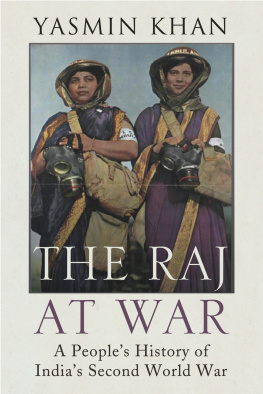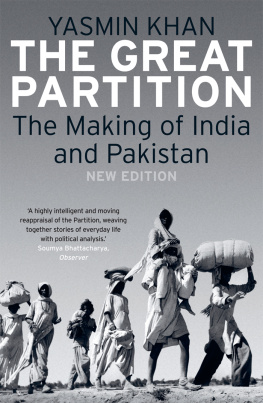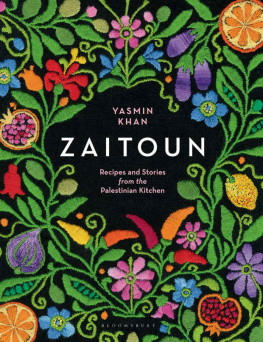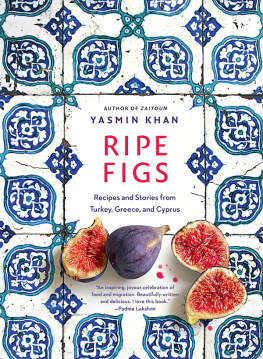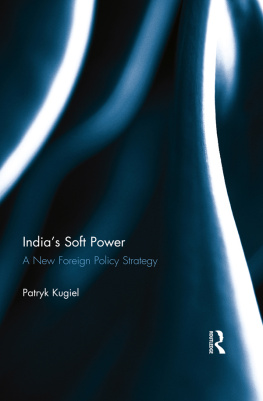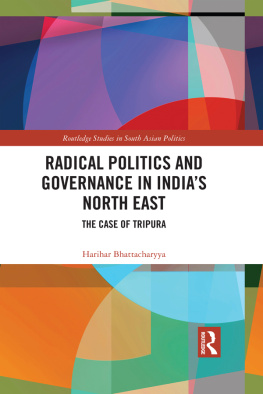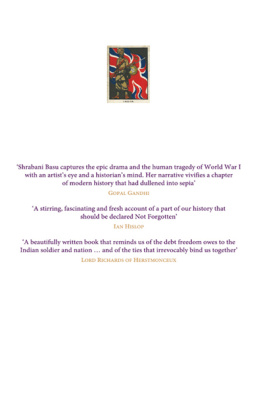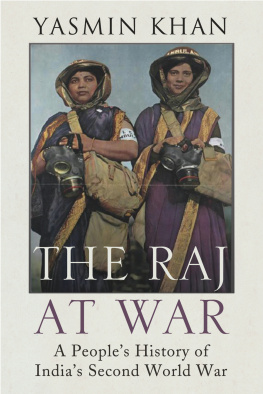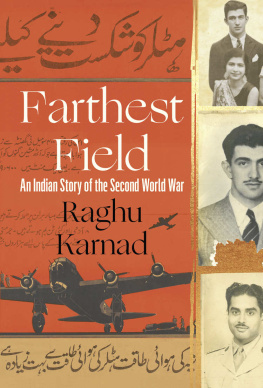Contents
About the Author
Yasmin Khan is a British writer and historian. She is an Associate Professor of History at the University of Oxford and a Fellow of Kellogg College.
Her first book, The Great Partition: The Making of India and Pakistan, won the Gladstone Prize from the Royal Historical Society in 2007 and was longlisted for the Orwell Prize in 2008.
About the Book
The Second World War was not fought by Britain alone. India produced the largest volunteer army in world history: over 2 million men. But, until now, there has never been a comprehensive account of Indias turbulent home front and the nexus between warfare and Indias society.
At the heart of The Raj at War are the many lives and voices of ordinary Indian people. From the first Indian to win the Victoria Cross in the war to the three soldiers imprisoned as traitors to the Raj who returned to a heros welcome, from the nurses in Indian General Hospitals to the labourers, prostitutes and families their testimonies reveal the great upheaval experienced throughout the land.
Yasmin Khan presents the hidden and sometimes overlooked history of India at war, and shows how mobilisation for the war introduced seismic processes of economic, cultural and social change decisively shaping the international war effort, the unravelling of the empire and Indias own political and economic trajectory.

British tanks during riots in the North-West Frontier Province, 1935. At the outbreak of war the focus was on India's north-western border and the fear of war with Russia rather than the Japanese.

British soldiers at Chitral on the Afghan border with khassadars, or locally raised militias in 1940. One third of the Indian Army was stationed on the North-West Frontier at the start of the war.

A propaganda poster used in Britain to reassure people of the unity of the British Empire and Commonwealth. Canada, Australia, Britain, South Africa, New Zealand, India, and South Africa are represented.

Three stokes on board the Royal Indian Navy sloop, HMS Sutlej, 1944. In addition to navy seafarers, Lascars or Indian merchant seamen were critical to the war and over 6,600 lost their lives.

Recently enlisted recruits at an Indian Army Training Centre. By late 1940, 20,000 a month were joining up at the end of the war the Indian Army was over 2 million men strong.

A Recruiting Officer inspects a potential recruit in Northern India. There was no conscription in India but men joined up for many reasons often seeking the chance for a regular income and more plentiful food.

Men of the 4 th Indian Division with a captured German flag at Sidi Omar, close to the Egyptian-Libian border, part of the North African campaign of 1941.

An Indian fighter pilot of the Royal Indian Air Force. South Asian pilots also joined the RAF in Britain.

Subhas Chandra Bose arrived in Germany in early 1941, after he escaped house arrest in Calcutta, and held meetings with the senior Nazi leadership including Heinrich Himmler.

Indians living in Burma evacuate Rangoon in fear of the advancing Japanese army in 1942. At least 600,000 Indians are believed to have fled Burma after the Japanese invasion.

Subhas Chandra Bose delivering a speech in Japanese occupied Asia as part of the Indian National Army programme, c. 1943.

A propagand poster showing South Asians rubber tapping. Ceylon, Malaya and Burma were all important producers of wartime rubber. Posters such as this one circulated in many local languages.

Malaria was a major threat to the Fourteenth Army in the Burma campaign and invalided many more soldiers than combat. This poster, printed in Bombay in 1940, was circulated by the British Army in India.
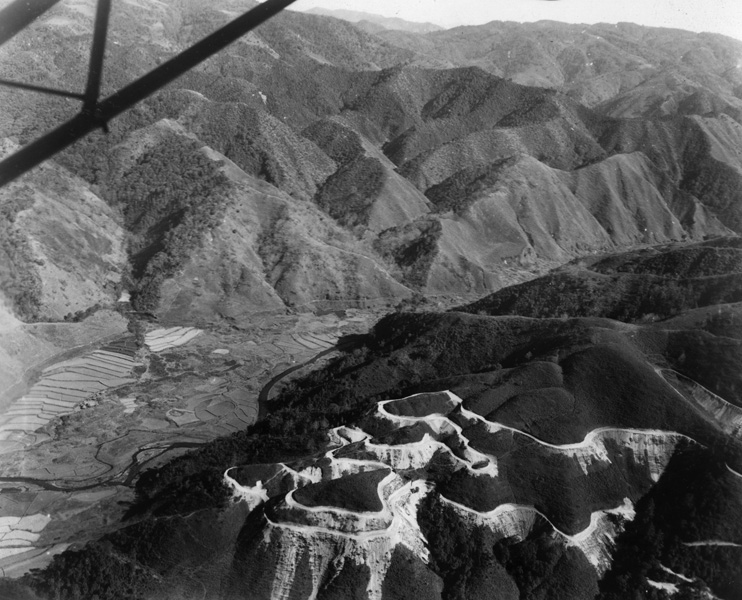
An aerial view of the Ledo Road linking India, Burma and China. Much of the road was cut by hand by Asian labourers.

A nurse adjusts a doctor's mask at a hospital in Calcutta. Shortages of trained nurses was a major problem during the Burma campaign and civilian hospitals lost trained staff to the war effort.

Parsi women training on an air raid precaution course in 1942 in Bombay. As fears of a Japanese invasion of India intensified, recruitment of ARP wardens was widespread.

Sir Stafford Cripps meets Gandhi in Delhi during his mission to reconcile the Britsh government and Indian National Congress in March 1942. Despite the smiling faces the diplomatic mission failed and Gandhi was imprisoned later in the year.

Aruna Asaf Ali, a charasmatic leader of the underground movement during the Quit India campaign of 1942 and later a prominent politician after Independance.

